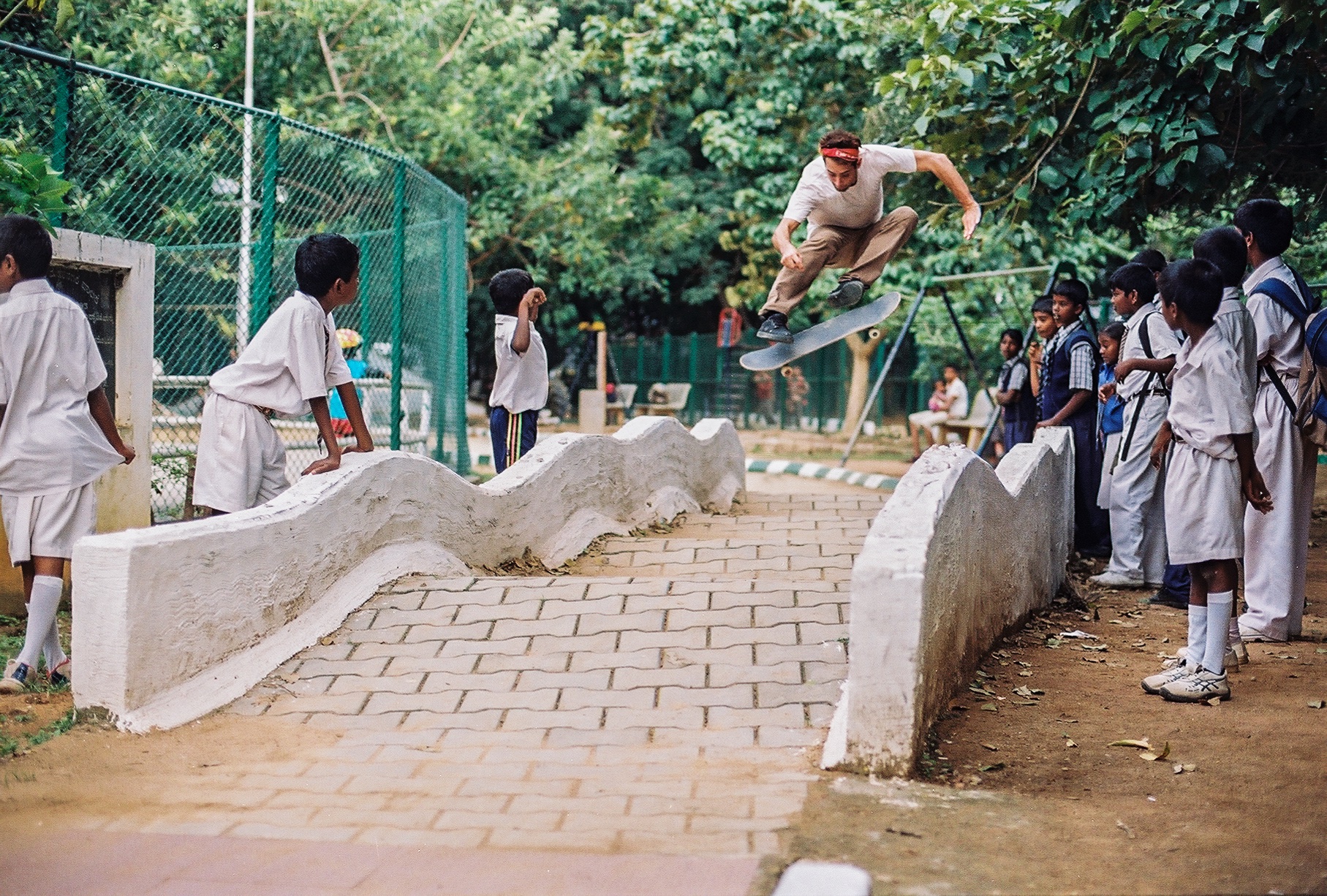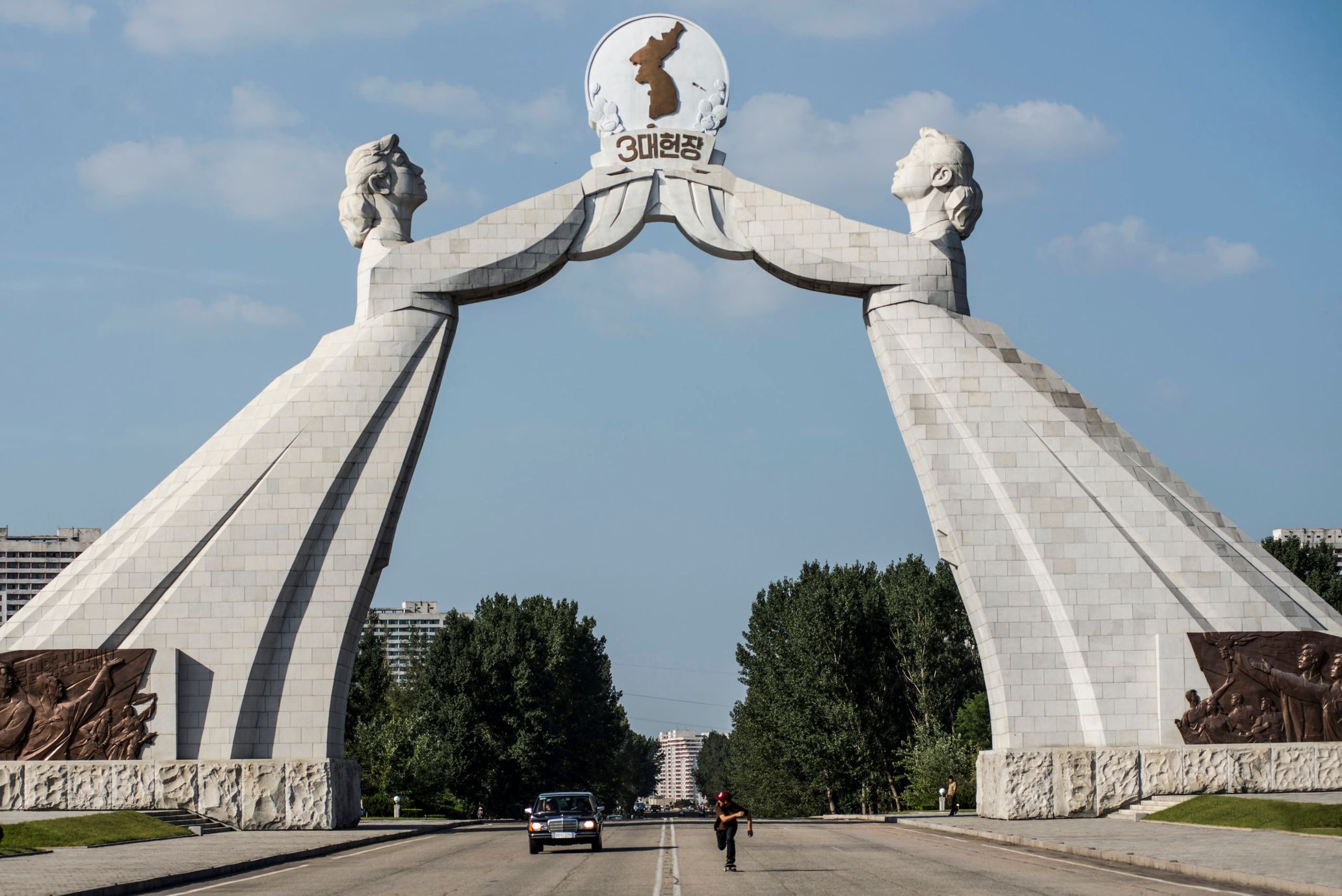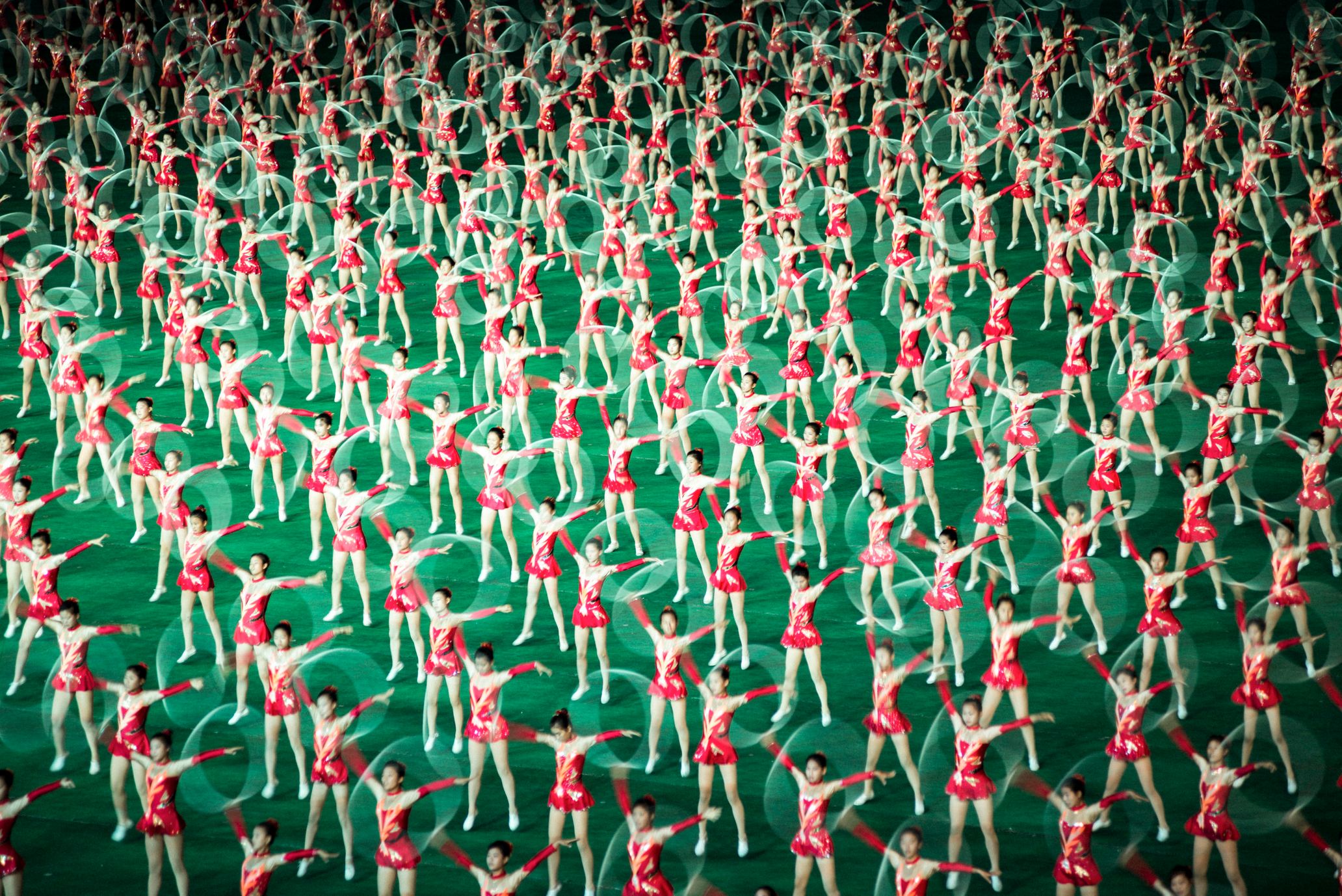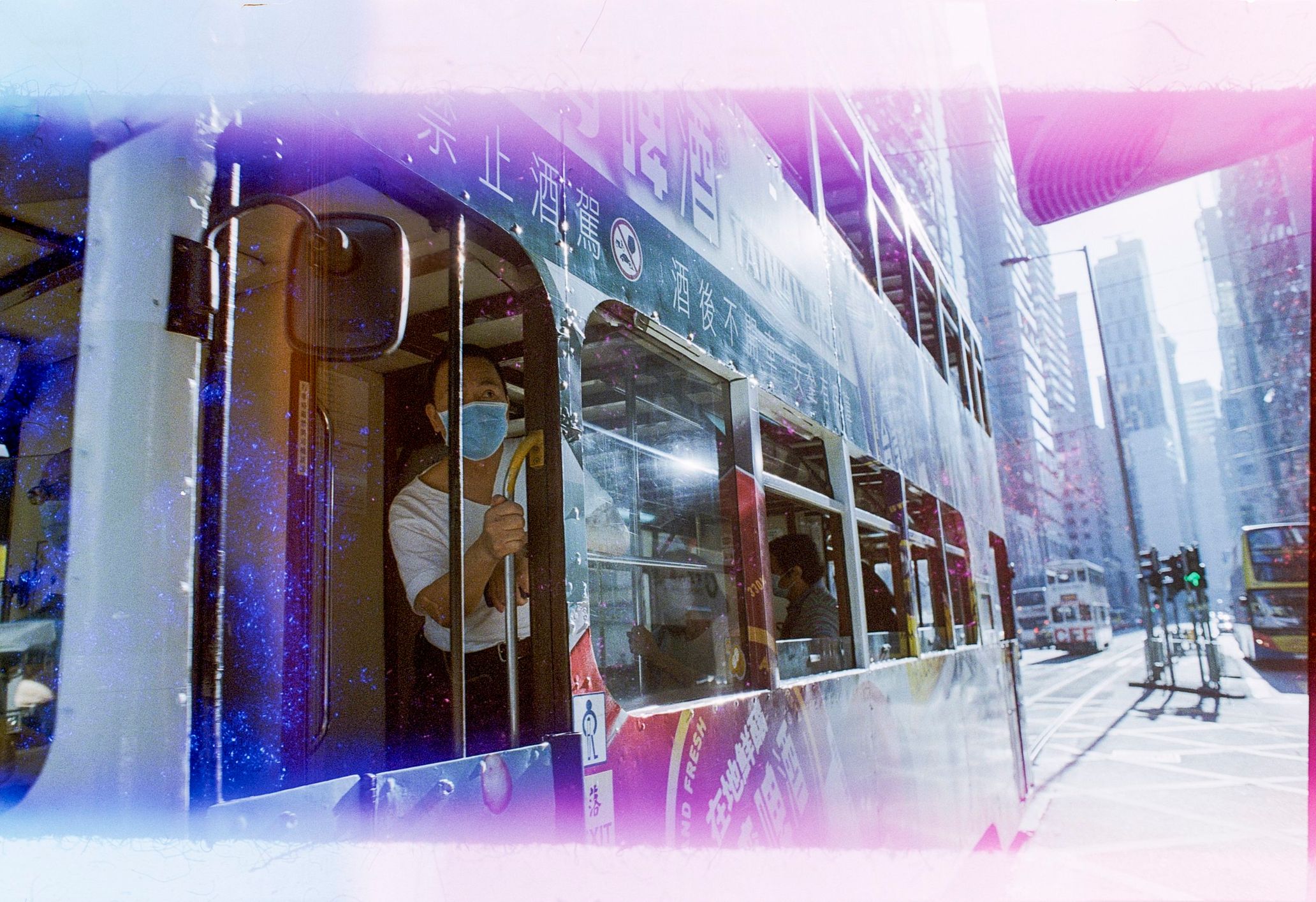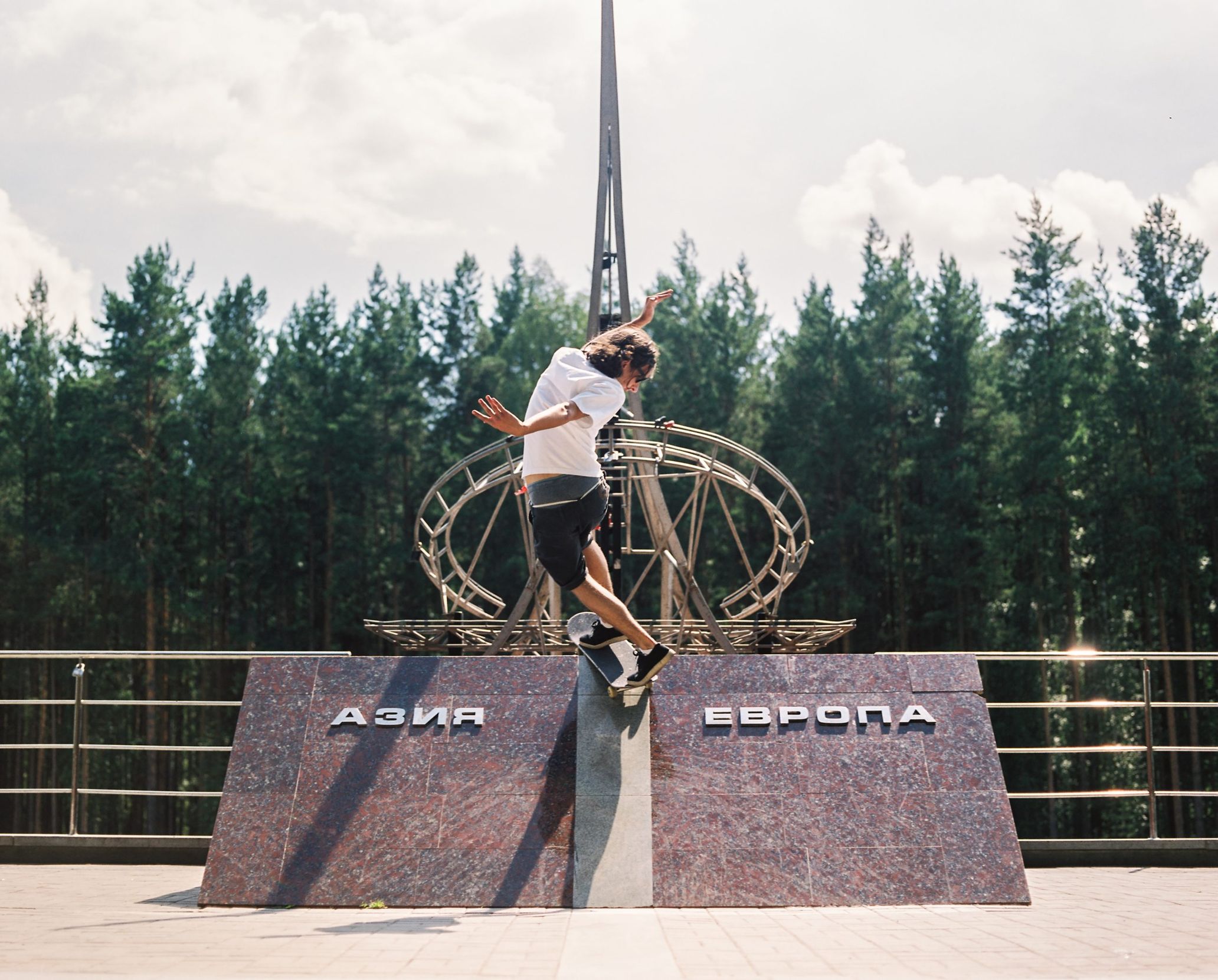Cameras are communication tools that don’t rely on words. Taking photos of someone in secret is indefensible, but I believe photography itself is meaningful. In the realm of skateboarding, it’s the second language of skaters. Once you push your skateboard, the world becomes your oyster. I’d like to reflect on the concept of skating and traveling, now that coronavirus has restricted us from doing so.
©Patrik Wallner
Visualtraveling
— To travel is to expand oneself
Patrik Wallner is a traveling photographer whose name is known well in the Japanese skate scene. For over a decade, he’s dedicated his time to zig-zagging the streets of Europe, Asia, and Africa, going on adventures and hunting for spots to skate in. Naturally, he’s spent his energy on traveling, skating, and filming both still and moving images. His many films and one valuable photo book tell his tales.
His long journey began in 2003. He moved to the gorgeous town of Barcelona in 2007, after spending his teenage years in America. Barcelona was the perfect destination for art enthusiasts and lovers alike at the time. It was also the metropolis for skaters who craved something new after becoming bored with skating in California’s streets. Looking back at skaters in MACBA (Barcelona Museum of Contemporary Art) makes him shed a tear from feelings of jealousy and nostalgia. That’s how much he loved the city and why he approached skaters all over town so he could shoot them. His origins of creating come from there.
The Barcelona Olympics in 1992 triggered the rise of unusually shaped parks, sidewalks, and buildings. For creative skaters who wanted more than gaps and staircases, this became a magical place. Antonio Gaudi’s Barcelona was an apt fit for them. Patrik Wallner discovered the beauty of traveling thanks to his move to the city. That is, he found out how traveling is a tool to deepen one’s knowledge and understanding. Whether it was for shooting or skating, Patrik Wallner pushed his board from place to place and expanded his horizons.
©Patrik Wallner
Documenting de facto countries: Patrik Wallner’s photojournalism
His photography will surely captivate anyone who lays their eyes on Patrik Wallner’s photo book, The Eurasia Project. China, Hong Kong, North Korea, Thailand, Vietnam, Malaysia, Indonesia, India, Laos, Myanmar, Cambodia, Abkhazia, Bangladesh, Pakistan, Iran, Iraq, Lebanon, Jordan- Photos from 101 countries are in the photo book. His manifesto was to travel to relatively unknown places: from East Asia and to all countries between Europe and Asia. He’s been to countries I’ve never heard of, and I might never visit these places.
He even made a skate video called Meet the Stans, where he shot counties ending with “stan” in Central Asia. I didn’t even know these countries existed. For those familiar with Japanese entertainment, think of this video as the skater version of Kotaro Sawaki’s book, Midnight Express, or TV show Susume! Denpa Shonen’s popular segment, “Eurasia Transcontinental Hitchhike,” featuring Saruganseki… or maybe not.
Patrik Wallner discovers brilliant locations without ever expecting he could skate there. This encourages him to be creative and come up with different skate tricks. Only skaters could have fun and be creative with this specific medium. Of course, behind the scenes, he ran into sketchy things and got into some pretty deep trouble. Only Patrik Wallner can capture all of that in his photos and videos.
Until I came across his work, I never really saw people skating against the backdrop of a world heritage site. It’s not every day you see a guy in a sweaty shirt doing a backside 180 in front of a crowd of hijab-wearing people. No one was skating in the streets of insular North Korea before Patrik Wallner. His skateboard is his visa, which is a cliché you hear often. But in his case, it’s not because he used his skateboard as much as he could and broadened his world.
The Eurasia Project (2018) / ©Patrik Wallner
The next stage of Visualtraveling
In Japan, many people still don’t understand the appeal of traveling with a skateboard in hand. Even those that aren’t interested know that skateboarding was officially approved for the Tokyo Olympics. It’s difficult to tell if it’s ever going to be held because of coronavirus. However, Tokyo is changing thanks to the Olympics. This change calls to mind how Barcelona, rich with history, transformed into a mecca for skaters. More and more skaters are excitedly searching for skate spots. If the pandemic never happened, Patrik Wallner and skaters from all around the world would’ve most definitely traveled to Japan. New skate spots and cultural movements would’ve sprouted, no doubt.
Today, traveling filmmaker Patrik Wallner is in Hong Kong. Before that, he was based in Bangkok, Thailand. From the smog-choked city of Bangkok to Hong Kong, the city with a booming population. A tumultuous atmosphere still surrounds him. Because of the 2019-2020 pro-democracy protests there, the situation remains to be precarious. No one can predict what’s going to happen next, but he continues to press the shutter button under such circumstances. A traveler, skater, and videographer. And-
“I’m a photographer, so my duty is to document the situation of where I live all the time.”
He has to be careful when shooting in Hong Kong. But he’s pushed his board and taken photos all over the world as a skater; there are photos only Patrik Wallner can take. His photos aren’t political or ideological — they’re skate photos. He can’t stop shooting on his skateboard, the ride that gives him freedom. At the very least, the way skaters essentially think is skater-like, not ideological. This is the same, no matter where he goes.
©Patrik Wallner
“As long as there’s a paved surface, that gives me a reason to go anywhere with my skateboard.”
©Patrik Wallner
The first time I featured Patrik Wallner’s photography was in 2010. It was an issue of Sb Skateboard Journal called “Skateboard diaspora,” which is the theme for my articles here on TOKION. I’ve included one of the photos from that issue here, which is a photo of a skater skating at the border between Asia and Europe in the outskirts of Yekaterinburg, Russia. He took it on a two-month-long trip from Moscow to Hong Kong via skating and taking the Trans-Siberian Railway. He also made a video on it called 10,000 Kilometers.
Shooting and filming alone is hard work. He needs to carry essential photography equipment, a backpack filled with clothes and necessities, and a skate deck that’s impossible to fold. But for those with an affinity for skate decks, they’re very convenient. So that’s no problem, but it’s necessary to be careful not to get it stolen. It makes me exhausted just thinking about the things Patrik Wallner carries around. We mustn’t forget that it’s also tough on the skaters he shoots and films, as they need to skate and do tricks over and over. The photos and films he takes aren’t only beautiful; they embody the discoveries he made with skating. It looks fun, but it’s also incredibly hardcore. When I first featured his work, I asked him why he travels to the extent he does with a skateboard and heavy equipment.
“As long as there’s a paved surface, that gives me a reason to go anywhere with my skateboard. I can find hidden places that people could never go to on holiday or by sightseeing.”
His urge to use his inquisitive spirit to create something, and his energy to travel, are impressive. That’s why his photos are so powerful and aren’t the same as other photographers in the world. Even in landscapes that make you go, “Hold on, that far?” he captures skaters with his camera.
Visualtraveling, The Eurasia Project
It started when he visited Afghanistan with his skateboard. He started Visualtraveling to travel to every country in Europe and Asia. He gathered one photo from all 101 countries before his 30th birthday, excluding Syria, which was in a dangerous civil war, and South Ossetia, where he couldn’t get a visa. The photos he took of people and beautiful sceneries in nature were put into one book and released in 2018.
Patrik Wallner
Patrik Wallner is a Hungarian photographer and filmmaker born in West Germany and raised in America. His principle is to document skaters and people in unusual places across the globe. He spent most of his 20s zig-zagging Asia and Europe to shoot. He’s currently based in Hong Kong, where the state of things is still volatile and is making a photo book with monochromatic photos.
http://www.patrikwallner.com
Instagram:@patrik_wallner / @visualtraveling
Translation Lena-Grace Suda

